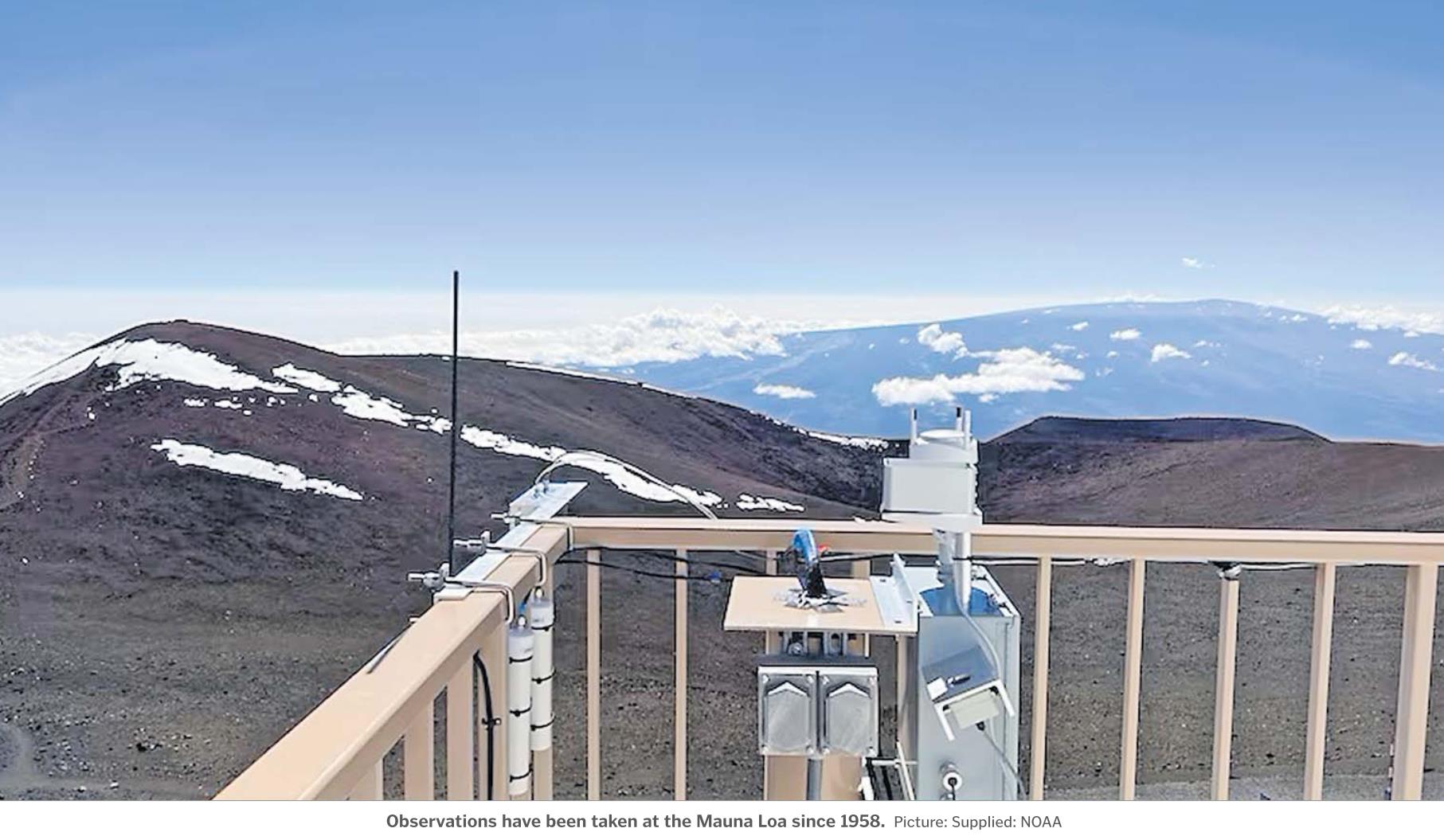Scientists say we need to make “every effort” to combat dangerous climate change as the concentration of carbon dioxide in the atmosphere hits a record high.
Measurements from the Mauna Loa Observatory on Hawaii’s Big Island averaged 424 parts per million (ppm) in May 2023, up 3 ppm on last year’s May average, according to National Oceanic and Atmospheric Administration (NOAA) data.
Atmospheric CO2 peaks in the Northern Hemisphere in May, and so that month is used as a benchmark.
The new record builds on last year’s all time high, pushing total atmospheric CO2 concentration to 50 per cent above pre-industrial levels.
NOAA Administrator Rick Spinrad said increases in carbon dioxide levels in the atmosphere were “a direct result of human activity”.
“Every year, we see the impacts of climate change in the heat waves, droughts, flooding, wildfires and storms happening all around us,” Dr Spinrad said in an NOAA statement.
“While we will have to adapt to the climate impacts we cannot avoid, we must expend every effort to slash carbon pollution and safeguard this planet and the life that calls it home.”
The observatory on Mauna Loa has measured atmospheric CO2 since 1958, when the level was less than 320 ppm.
The upward trend is known as the Keeling Curve, which is a graph that shows the seasonal and annual changes in atmospheric carbon dioxide, and was named after David Keeling, who started the measurements.
The Scripps Institute of Oceanography at UC San Diego, which keeps its own independent records of CO2, measured a May 2023 average of 423.78 ppm, which is also 3 ppm above its own records from May last year.
The Scripps program is now run by David Keeling’s son, geochemist Ralph Keeling.
“What we’d like to see is the curve plateauing and even falling because carbon dioxide as high as 420 or 425 parts per million is not good,” Professor Keeling said.
“It shows that as much as we’ve done to mitigate and reduce emissions, we still have a long way to go.”
ENSO could be masking bigger rise.
Mark Howden, a climate scientist and IPCC contributing author at the Australian National University, said the increase in CO2 in the atmosphere was not a surprise, and could be masked by the El Niño Southern Oscillation (ENSO).
High rainfall during La Niña increases growth which leads to more carbon sequestration in vegetation, as well as bushfire suppression.
But if we move into El Niño, that sequestration is likely to be undone. “(A potential) El Niño means that probably next year our CO2 will go up by more than 3 parts per million,” said Professor Howden, who wasn’t involved in the Mauna Loa observations.
“That’s because El Niño tends to dry out continents like Australia, which means you actually lose more carbon through decomposition than you gain through plant growth.”
Signatories to the Paris Climate Agreement committed to keeping warming “well below” 2 degrees Celsius above pre-industrial levels, and to pursue efforts to keep it to 1.5C.
Above 1.5C, the impacts from climate change will become much more severe.
Annual emissions during peak COVID shutdowns dipped by around 6 per cent. That’s how much we need to be cutting emissions each year to limit warming to 1.5C, Professor Howden said.
“That means we would have to do that 6 per cent reduction in the COVID year, followed by another 6 per cent, and another 6 per cent … and clearly we haven’t done that.
“If we actually look at greenhouse gas emissions, we had a dip during the main COVID year that was largely due to reductions in transport, and that bounced back immediately afterwards.”
Because CO2 persists in the atmosphere for hundreds of years, Prof Howden said readings at Manua Loa would continue to go up even after our rate of emissions plateaus and begins to decline.
“Even if we level of our greenhouse gas emissions, that would still result in accumulation of carbon dioxide in the atmosphere,” he said.
“That’s because, roughly speaking, half of every tonne of carbon dioxide we emit sits in the atmosphere for hundreds or thousands of years.
“The only way to stop that is to take it down to zero, at which stage we’ll actually start to stabilise CO2.”
Prof Howden said the message hasn’t changed, but we’re losing time to act on it.
“The clear message from the IPCC is the only trajectory that’s consistent with the Paris Agreement goals is very rapid and very large and very sustained cuts in greenhouse gas emissions.”
NICK KILVERT is the ABC’s environment reporter. The views expressed in this article are the author’s and do not necessarily reflect the views of this newspaper.



